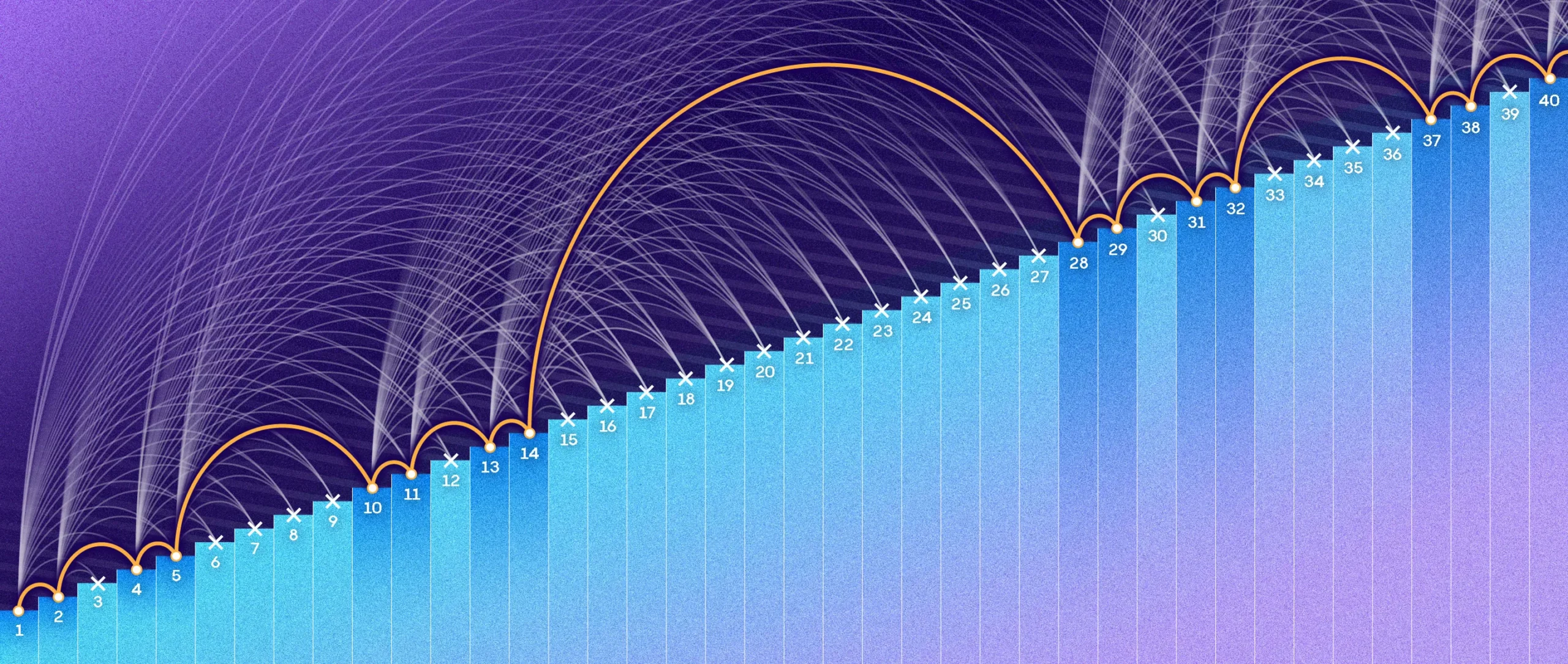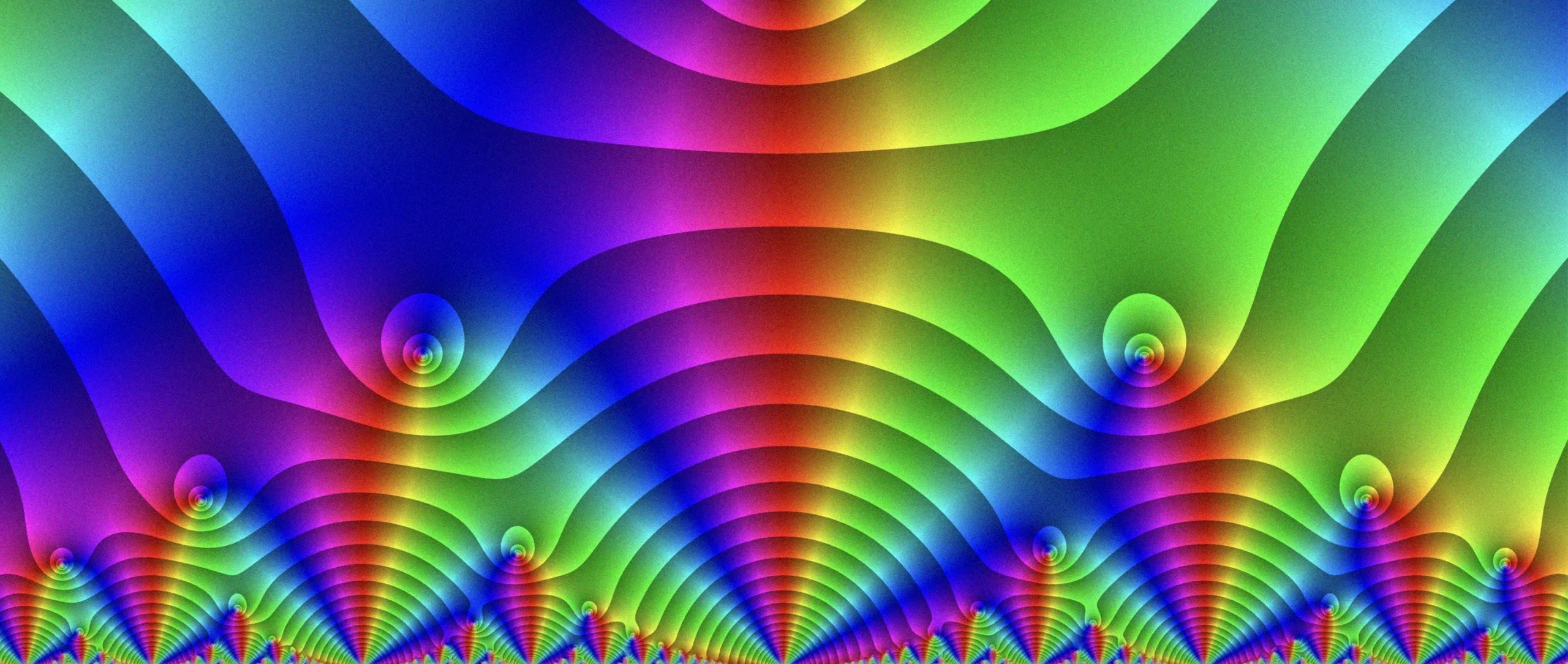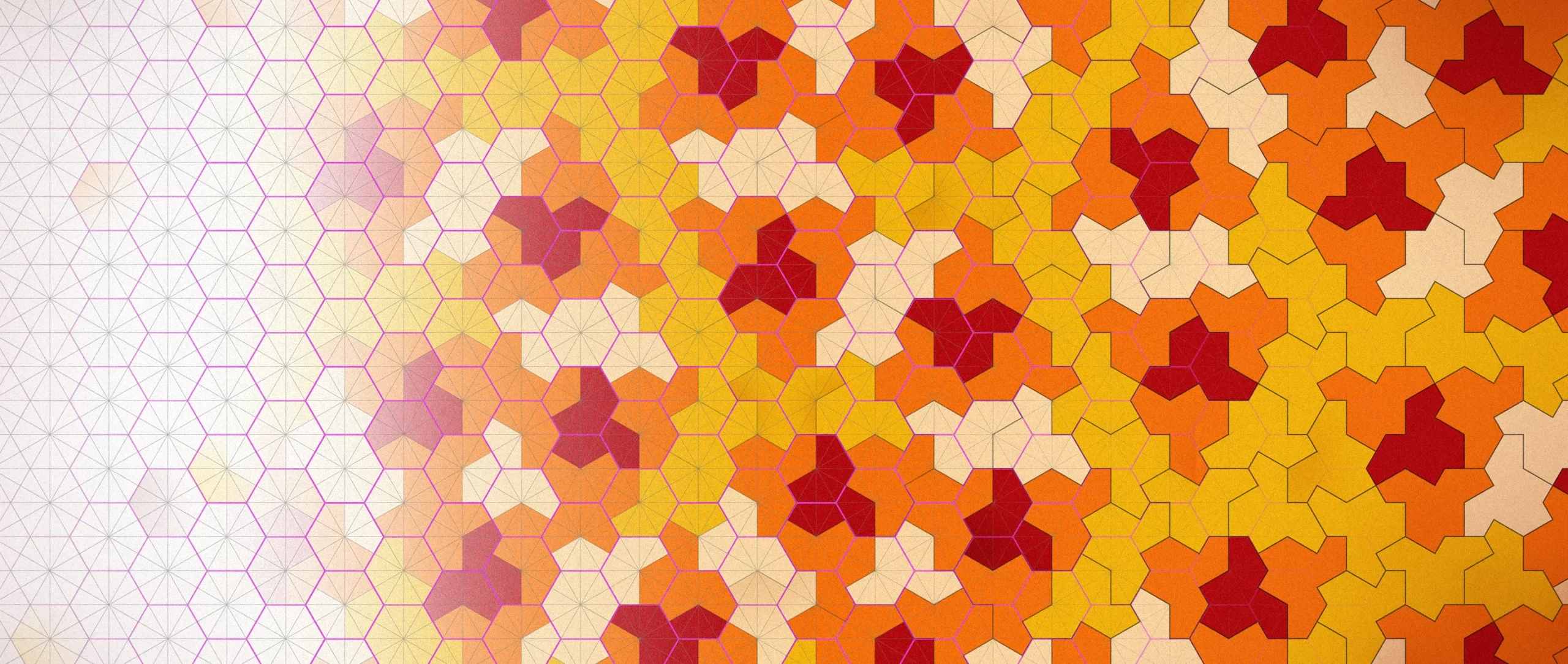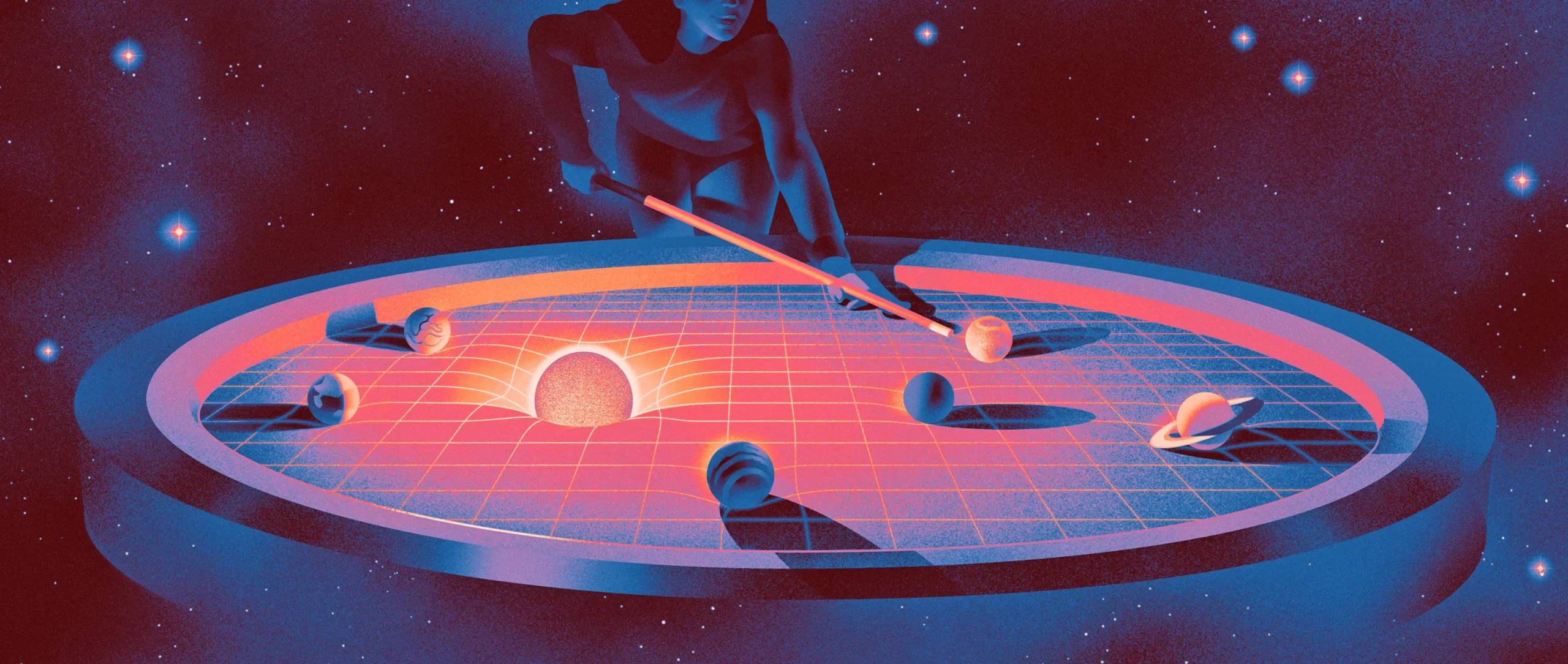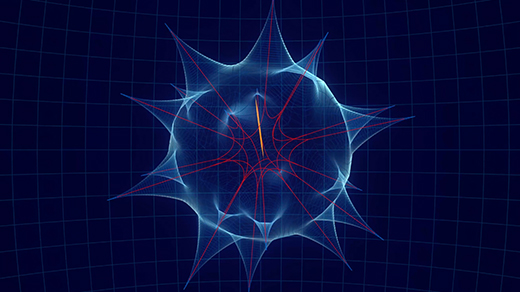Introduction
Mathematical truths are often born of the conflict between order and disorder. Mathematicians discover patterns, and, to better understand the mysterious forces at play, they look for countervailing impulses that disrupt those patterns.
That tension came up repeatedly in our coverage this past year. We covered breakthroughs in graph theory, combinatorics, number theory and geometry — areas where patterns arise in unexpected ways, sometimes because of connections between seemingly distinct mathematical structures, and sometimes because of hidden intrinsic mechanisms uncovered by mathematicians in new proofs.
In a riveting interview with our senior writer Jordana Cepelewicz, Andrew Granville discussed how calculation and experimentation can, in sometimes forgotten ways, help mathematicians search for hidden patterns. He also spoke about changes in what it takes to convince other mathematicians that a result is true, and why he believes that examining the social nature of mathematics is essential to understanding what a proof is.
This was one of several conversations we published this past year about the nature of mathematical truth. Eugenia Cheng spoke with Joy of Why podcast host Steven Strogatz about category theory, a sort of “mathematics of mathematics” that can scare off other mathematicians with its level of abstraction. And Justin Moore spoke with Strogatz about the limits of the axioms — basic, obvious truths — of set theory and why there will always be important, unanswerable mathematical questions.
Though the bulk of our coverage fell squarely in the abstract realm, Minhyong Kim spoke with Kevin Hartnett about Mathematics for Humanity, an organization he founded to support mathematicians who want to use math to solve social challenges. And Mike Orcutt reported on how mathematics is used to ascertain the fairness of legislative district maps and to draw more equitable ones.
A Big Year in Graph Theory
If there is one area of math that was particularly fruitful in 2023, it’s graph theory. One of the biggest mathematical discoveries of the past year was the proof of a new, tighter upper bound to Ramsey numbers. These numbers measure the size that graphs must reach before inevitably containing objects called cliques. The discovery, announced in March, was the first advance of its type since 1935. It pertained to so-called symmetric Ramsey numbers. This was followed in June by a new result on the more general asymmetric case.
Both of these papers concerned what happens as graphs grow infinitely large. But Quanta also pondered the middle distance, looking at what mathematicians can prove about graphs that are too large to analyze using brute force, but smaller than the infinite, asymptotic limit.
We chronicled new results on how networks of connected oscillators come into synchrony and how graph theory connects to quantum field theory. We reported a new discovery about the possibilities of subdividing mathematical objects called vector spaces in a particular way into subsets called designs. And Patrick Honner, our Quantized Academy columnist, wrote about the way that local properties of graphs govern their global structure.
Quanta also published articles on two long-standing coloring problems. One explored the proof of the famous four-color theorem, which shows how four colors are enough to color any map on the plane so that no two adjacent regions have the same color. The other covered a new result on a less well-known but equally intriguing question, which asks how much of a plane can be colored in a way that ensures that no two points that are exactly one unit apart have the same color.
Samuel Velasco/Quanta Magazine
Making Combinatorics Conjectures Count
Graph theory can be thought of as a branch of combinatorics — the mathematical study of counting. Counting what can happen with collections of nodes and edges is, in some sense, a special case of counting combinations more generally.
The year ended with a landmark proof by four prominent mathematicians of a longstanding conjecture that relates combinatorics to the algebraic structure of sets.
Back in February, two computer scientists, Zander Kelley and Raghu Meka, stunned mathematicians with news of an out-of-left-field breakthrough on an old combinatorics question: How many integers can you throw into a bucket while making sure that no three of them form an evenly spaced progression (like 3, 8 and 13 or 101, 201 and 301)? Kelley and Meka smashed a long-standing upper bound on the number of integers smaller than some cap N that could be put in the bucket without creating such a pattern.
The previous month, Kevin Hartnett reported on a paper from November 2022 by another outsider — a researcher at Google named Justin Gilmer who had left mathematics years before, but had never stopped thinking about a combinatorial problem called the union-closed conjecture. This conjecture concerns families of sets like {1}, {1, 2}, {2, 3, 4}, {1, 2, 3, 4}. This family is “union-closed” because if you combine any two sets in the family, the combination is also in the family. The conjecture says that if a family is union-closed, it must have at least one number that appears in at least half the sets. Gilmer used an argument drawn from information theory that relied on randomly choosing two sets from a union-closed family that met certain characteristics to prove a result that is an important step towards the full conjecture. His argument is yet another example of how randomness can be used as a tool to infer the existence of structure.
By contrast, an April article by Kevin Hartnett described an instance where intricate but simple structures surprisingly turn out to be possible. Bernardo Subercaseaux and Marijn Heule showed that it’s possible to fill an infinite grid with numbers in such a way that the distance between two occurrences of the same number must be greater than the number itself — using only the numbers between 1 and 15.
And longtime Quanta contributor Erica Klarreich wrote about the surprising prevalence of so-called intransitive dice. These are, for example, sets of three dice A, B and C in which A is likely to beat (roll a higher number than) B, B is likely to beat C and C is likely to beat A. A new paper showed that if you know only that die A beats die B and B beats C, that gives no information about whether A or C is likely to prevail in a head-to-head matchup.
Courtesy of Samuel Jinglian Li
New Connections in Number Theory
Perhaps more than in any other area of mathematics, number theorists can prove simple-sounding theorems using incredibly complicated technical constructions. This year, Quanta took readers on a tour of some of those constructions. We published an in-depth visual explainer of modular forms, which have been described as the “fifth fundamental operation” of math, along with addition, subtraction, multiplication and division. And we took readers on a historical tour of quadratic reciprocity, one of number theory’s most powerful tools. The modular-forms explainer was inspired by an article about so-called noncongruence modular forms — a less well-studied type of function that nevertheless has major implications for physics.
Max Levy, who wrote the quadratic-reciprocity explainer, got interested in the subject while reporting about a surprising summer discovery about patterns that circles can make. Levy recounted how two students working on a summer research project helped disprove a long-standing conjecture about how circles can be harmoniously nested, called the local-to-global conjecture. It was one of many developments this year that showcased the increasing utility of computational tools in mathematics. The students and their co-authors first found evidence that the conjecture was false by poring over computer-generated plots they’d created in an effort to see it at work.
Modular forms are closely related to elliptic curves — smooth functions of two variables where one variable is squared and the other cubed. (The functions also satisfy some particular mathematical constraints.) The relationship between the two was central to Andrew Wiles’ 1994 proof of Fermat’s Last Theorem. Hartnett wrote about advances in researchers’ understanding of that relationship for elliptic curves that are defined with variables drawn from imaginary quadratic fields — numbers of the form a + b $latex \sqrt{-5}$ where a and b are both rational numbers, or fractions.
He also wrote about a long-awaited magnum opus — a 451-page manuscript by the Fields medalist Akshay Venkatesh, together with Yiannis Sakellaridis and David Ben-Zvi, which elaborates further connections between objects related to modular forms and L-functions, an important type of infinite sum with a deep relationship to prime numbers.
Number theorists pay particular attention to prime numbers and the subtle and beautiful ways they’re distributed among the other integers. Intriguingly, if you consider them going out to infinity, it has long been known that the primes leave equal numbers of remainders when divided by some number — for instance, if you divide all the prime numbers by 5, you’ll get equal numbers of the remainders 1, 2, 3 and 4. But mathematicians keep striving to prove results about how quickly primes even out. In October, we reported on a new generation of mathematicians proving theorems about the ways in which primes are distributed.
We also introduced — and reintroduced — a fun mathematical game called Hyperjumps that explores the tension between structure and randomness by challenging players to create simple sequences of numbers using basic arithmetic.
Samuel Velasco/Quanta Magazine
Aperiodic Monotile Found After Long Search
It was also an exciting year in geometry. The most attention-getting result of the year was the discovery of a new kind of tile that covers the plane in a pattern that never repeats. A two-tile combination that does this has been known since the 1970s, but the single tile, discovered by a hobbyist named David Smith and announced in March, was a sensation. Fans used the simple design as a cookie cutter and sewed it into quilts. We followed our news coverage with a column explaining some of the underlying math and another giving a brief history of tiling.
Speaking of needles, it was also a year of progress on the Kakeya conjecture, which asks how small a volume of space an idealized needle can occupy while spinning in all directions. A new proof of a special case of the conjecture (called the “sticky” Kakeya conjecture) gives strong evidence that the more general conjecture is true.
The conjecture turns out to have implications not only for geometry, but also for harmonic analysis and the study of partial differential equations. A follow-up explainer examines those implications. And a Quantized Academy columntakes readers through the conjecture’s underlying logic.
In other geometry news, a long-standing idea about maps between spheres of different dimensionality, called the telescope conjecture, was shown to be false. Particular types of contact structures (patterns of planes that satisfy certain mathematical properties) that had long been thought to be impossible turned out to exist.
We interviewed Emmy Murphy, a geometer who studies such contact structures. Murphy describes contact geometry (and its sibling, symplectic geometry) as existing in the middle of a spectrum of rigidity and flexibility. In rigid geometry, much depends, she said, on precise measurements, while flexible geometry tends to resemble algebra. But in between, she said, is where “visual thinking is more useful.”
In January, the mathematician Assaf Naor and the computer scientist Oded Regev proved the existence of so-called spherical cubes. These are objects whose surface area grows slowly — as does the surface area of spheres in higher dimensions — but which can completely fill space the way cubes can.
One of the most prominent geometers of the 20th century, Eugenio Calabi, died at age 100 on September 25. Jerry Kazdan, one of his longtime colleagues, said that Calabi would “ask interesting questions that no one else was thinking about.” Our obituary of Calabi explores those questions, focusing particularly on his best-known discovery, Calabi-Yau manifolds, which later became central to string theory in physics.
Harol Bustos for Quanta Magazine
It’s an Unstable World After All
Speaking of physics, we also published several new results about the mathematics of black holes, a favorite subject of contributing writer Steve Nadis. He wrote about a new paper that found an infinite number of different black hole shapes in higher dimensions, and another paper that clarifies the mathematics of the boundaries of black holes.
In April, we described how mathematicians are teaming up with physicists to understand new kinds of symmetries in quantum field theories.
Kathryn Mann and Thomas Barthelmé, along with Steven Frankel, published a series of papers characterizing dynamical systems called Anosov flows that balance chaos and stability. At any given point, the flows converge in one direction and diverge in another.
And in what might be the most unsettling math article of the year, we related news of a series of three papers by Marcel Guàrdia, Jacques Fejoz and Andrew Clarke showing that planetary orbits in a model solar system will always be unstable. The good news is that their model is quite unlike our solar system, although Clarke thinks similar instabilities may exist here as well.
But if they do, they’re not going to send any of the planets out of their orbits anytime soon, so you can look forward to another year of math coverage from Quanta in 2024.
Correction: January 12, 2024
An earlier version of this story said that Justin Gilmer had proved the union-closed conjecture. That is incorrect; he proved a result that is an important step towards that conjecture, but not the full result. The text has been updated.

